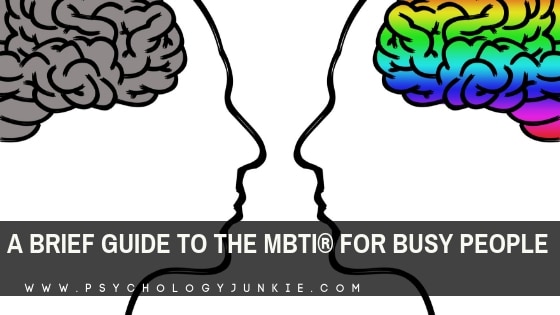How to Cool Down When You’re About to Explode, Based On Your Myers-Briggs® Personality Type
We’ve all been there: moments teetering on the edge of an emotional precipice, when stress levels peak and tempers flare. It’s during these times, when we feel like we’re about to explode, that we may say or do things we later regret. The pressure builds up to such a degree that we feel we are approaching a breaking point. So, what’s the solution? How do we navigate these tumultuous emotional waters and regain our equilibrium? That’s exactly what we’re going to delve into in this article. Using the framework of Myers-Briggs®, we’ll explore tailored strategies for each personality type to cool down, destress, and heal rather than hurt.
Not sure what your personality type is? Take our new personality questionnaire here. Or you can take the official MBTI® here.

How to Cool Down When You’re About to Explode, Based On Your Myers-Briggs® Personality Type
The ENFJ
ENFJs are known for their incredible ability to empathize and become the rock others lean on in times of distress. But sometimes, this altruistic nature may lead them to take on more than they can handle. They strive to be everything that other people need, and at times, the stress of this responsibility builds to a breaking point. Or perhaps, after being taken for granted one too many times, the usually composed ENFJ loses their cool.
If you’re an ENFJ dealing with such a situation, it’s essential to remember to prioritize self-care. Take a moment to step back from the situation. Deep breaths can be a helpful tool to restore calm; try to focus on the rhythm of your breath and let the tension ease out of your body. Excuse yourself from the environment that’s causing you stress, and get some solitude. Taking a walk in a peaceful location can be a great way to process your thoughts and emotions.
Consider bringing a journal on your walk and taking a break to record what you’re experiencing. Writing can be a powerful form of catharsis, giving you the opportunity to vent your feelings safely and objectively assess the situation. Once your body and mind feel calmer, reach out to a trusted friend to discuss your concerns. Their insights may provide a fresh perspective and help facilitate healing. Alternatively, reading your journal entries out loud can offer you a chance to listen to your own reflections, which might lead you to a piece of wisdom you didn’t realize you had.
Find out more about ENFJs: 5 Things People Misunderstand About ENFJs
The INFJ
INFJs, often identified as the “Advocates” or “Mystics”, are known for their deep thoughtfulness, empathetic nature, and intuitive understanding of human emotions. However, their high sensitivity to external stimuli and their intensely focused way of thinking can leave them feeling overwhelmed by frequent interruptions, over-stimulation, or frequent emotional input from others. Many people sense the INFJ’s natural empathy and use them as emotional dumping grounds. Once in a while that’s fine, but sometimes INFJs feel bombarded by other peoples’ unprocessed feelings. It’s important as an INFJ to make sure you are getting time away from all that to deal with your own feelings and put yourself first. If you’re an INFJ on the brink of losing your cool, remember the importance of taking time off to breathe and recharge in solitude.
A simple yet effective breathing technique for regaining emotional balance is “diaphragmatic breathing”. Here’s how to do it:
- Sit comfortably, with your knees bent and your shoulders, head, and neck relaxed.
- Place one hand on your upper chest and the other just below your rib cage. This will allow you to feel your diaphragm move as you breathe.
- Breathe in slowly through your nose so that your stomach moves out against your hand. The hand on your chest should remain as still as possible.
- Tighten your stomach muscles, letting them fall inward as you exhale through pursed lips. The hand on your upper chest must remain as still as possible.
Engaging in this deep-breathing exercise helps to lower your heart rate and blood pressure, promoting a state of calm and relaxation.
To help even more, create a low-sensory environment where you can sink into the depths of your intuition and block out distractions. This could mean laying in bed and covering your head with a blanket, or retreating to a dark, quiet closet to focus on your breathing. These quiet spaces devoid of external stimuli can help you reclaim balance and prevent sensory overload.
Another strategy that INFJs find beneficial is engaging in a small problem-solving task, like a quick game of solitaire or a phone game that requires a touch of analytical thinking. This enables you to get into your introverted thinking space, shifting focus away from emotional turbulence and towards logical, analytical functioning.
Finally, journaling can be an excellent self-help tool for INFJs. The act of writing down thoughts, worries, and emotions helps in processing and managing them. It’s even more beneficial if you read your entries back to yourself, which can provide a new perspective on your struggles and thoughts.
Curious to explore more about INFJs? Are INFJs Intelligent? A Look at the Mystic
The ENTJ
ENTJs are known for their relentless drive and unwavering focus on their goals and projects. If you’re an ENTJ, you know how to work hard and go after your ambitions with 100% of your energy. While this can lead you to making significant strides in your chosen fields, the intense focus and energy expenditure can also lead to exhaustion and burnout.
If you’re an ENTJ feeling the strain of intense pressure or frustration, it’s essential to channel that energy into a physical outlet. A quick, straightforward, and effective strategy is to go into another room and scream into a pillow. It might seem silly, but getting your frustration out in this way can help to release pent-up energy and reduce stress levels.
Next, take a few moments to engage in deep breathing exercises. This will not only help to calm your mind but also reset your body. To further this physical release, consider incorporating some physical movements such as jumping, shaking your body, or stretching. Imagine yourself literally shaking off stress, frustrations, or unnecessary obligations and tasks you can de-prioritize. These activities can help dissipate any remaining tension and encourage a state of equilibrium.
If possible, remove yourself from the stressful environment entirely. This could involve going for a walk in a different location or simply moving to a quieter space. During this time, focus on your body and its needs. Are you thirsty or hungry? Do you need rest? Attending to these physiological needs can help to restore a sense of balance and well-being.
Once you’ve taken care of your physical needs, it’s time to focus on your emotional state. With your mind and body in a healthier place, you’ll be better equipped to objectively evaluate what you’re experiencing. You might find that you can identify issues more clearly and can find effective solutions to address them.
Want to learn more about ENTJs? 15 Times Tommy Shelby Exemplified the ENTJ Personality Type
The INTJ
INTJs, often called “Strategists” or “Masterminds,” are highly focused individuals with big ideas and powerful work ethics. Their insight and logical, strategic approach to problem-solving make them exceptional contributors to any endeavor they undertake. However, the flip side of this intense focus is that interruptions, sensory stimulation, and the sheer volume of responsibilities can sometimes overwhelm them, leading to feelings of irritability and frustration.
If you’re an INTJ teetering on the edge of losing your cool, it’s crucial to remember the therapeutic benefits of solitude in a quiet, low sensory environment. Dedicate some time to be alone, in a space devoid of loud noises, bright lights, and bustling activity. Silence your phone, too, if you can.
One beneficial technique to practice in a quiet environment is a muscle relaxation exercise. Here’s a simple method you can try:
- Sit in a comfortable chair in a quiet room.
- Starting from your toes and moving up through your body, focus on tensing and then relaxing each muscle group. Hold the tension for about five seconds, and then let go.
- Pay attention to the distinct feeling of tension slipping away and the sense of relaxation that follows.
- Continue this pattern, moving upwards through your body—legs, abdomen, chest, arms, and finally your face and head.
Coupled with muscle relaxation, breathwork can also be a valuable tool for INTJs. Slow, deep breaths can help to mitigate the effects of stress on your body, allowing you to regain and maintain your composure during challenging situations.
Lastly, INTJs often need a peaceful space—both physically and emotionally—to process their inner feelings independently. Find ways to connect with your feelings, like listening to songs that strike a chord with you, journaling your thoughts and emotions, or taking a walk in nature for some reflective time.
Remember, no one understands the intricate workings of your mind better than you do. Take the time to explore and embrace what truly benefits and resonates with you.
Keen on understanding more about INTJs? The Underrated Kindness of the INTJ Personality Type
The ESFJ
Characterised by their warm and nurturing nature, ESFJs are often seen as the caretakers of the type community. Their keen sense of responsibility toward others often means they put others’ needs before their own. When the stress of this other-oriented mentality mounts, an ESFJ may find themselves on the verge of losing their temper.
If you identify as an ESFJ who’s feeling stressed, deep breathing is a fundamental first step to regain your calm. Just take a few moments to close your eyes and focus on your breath. Inhale deeply, hold for a moment, then exhale slowly. This simple act can help to lower your heart rate and create a sense of calm.
Removing yourself from the source of the stress is another powerful strategy. The change in environment can help to break the cycle of escalating tension, allowing you to recenter. It could mean stepping into another room, or better yet, heading outdoors for a calming walk in nature.
Harmonizing with your physical body can also prove beneficial. Start by tensing then releasing various parts of your body, beginning with your toes and working your way up to your head. This progressive muscle relaxation technique can help you become more aware of physical sensations and act as an effective stress relief tool.
For ESFJs, finding comfort in simple rituals or routines can also be therapeutic. It could be something as simple as enjoying a hot bath, gardening, or taking a quiet walk in a familiar park. These rituals serve as grounding mechanisms, restoring a sense of normalcy and control.
Finally, once you feel calmer, reaching out to a friend can be instrumental. For an ESFJ, verbalizing your thoughts and feelings to a trusted individual can be therapeutic and offer clarity on the situation at hand. The act of sharing allows you to not just vent, but also gain a fresh perspective on your concerns, helping you to be more effective in problem-solving.
Interested in learning more about ESFJs? Why ESFJs, ENFJs, ISFJs, and INFJs Struggle to Let Go of Bad Things
The ISFJ
ISFJs, often referred to as the “Defenders” or “Protectors,” are known for their unwavering dedication and strong sense of responsibility. Their ability to work hard and shoulder significant responsibilities is commendable. But sometimes they feel overwhelmed, especially when they feel taken for granted or they see people fighting or being unfriendly without good reason. When pushed to the brink, even the calmest ISFJ may find their temper flaring.
If you are an ISFJ on the verge of losing your cool, it’s essential to retreat into a calm and quiet space. Carve out some time for yourself, away from the chaos of the world, and engage in a soothing ritual. Something as simple as preparing a hot cup of tea and savoring it slowly in silence can work wonders. Pay attention to every detail—the aroma, the warmth of the mug in your hands, the taste—this mindfulness practice can help you reconnect with your Introverted Sensing side, making you feel more grounded and at peace.
Physical relaxation is equally important for controlling stress. Try this simple stretching technique:
- Stand up straight and raise your arms above your head.
- Bend forward from the waist, trying to touch your toes. Don’t strain yourself to reach all the way, just go as far as comfortable.
- Slowly return to the standing position, raising your arms above your head again.
- Lower your arms to your sides.
- Repeat the exercise for about five minutes, focusing on the sensation of movement and the rhythm of your breath.
Apart from physical relaxation, engaging your mind can also be therapeutic. Pursue a small brain-teaser, learn something new related to a hobby you enjoy, or delve into a topic that intrigues you. This cognitive engagement can provide a welcome respite from stress, allowing your mind to focus on something other than the source of your anxiety.
Journaling is another excellent tool for ISFJs. Putting your thoughts and feelings down on paper can help you gain a better understanding of your emotional state. Once you’ve penned down your thoughts, take a moment to read them back to yourself. This act of reflection can offer significant insights into your emotions, helping you address them more effectively.
Remember, being an ISFJ means you have a natural tendency to take care of others, but don’t forget to take care of yourself too.
Curious about more insights on ISFJs? 24 Signs That You’re an ISFJ, the Protector Personality Type
The ESTJ
ESTJs, often called the “Captains” of the Myers-Briggs® world, are known for their orderliness, responsibility, and practicality. They are the ones who are at the helm, ensuring tasks get done and their communities are taken care of. However, with great power comes great responsibility, and the weight of these responsibilities can occasionally feel overwhelming for ESTJs, putting them on the brink of losing their composure.
If you’re an ESTJ grappling with the stress of heavy responsibilities, the first step towards relief is acknowledging the need for a physical break. A simple walk outside or a short workout session can do wonders to help you decompress, reduce stress and improve your overall mood. Physical activities act as an outlet for the pent-up energy and tension, allowing you to return to your tasks with a fresh mind and rejuvenated spirit.
Moreover, laughter is often the best medicine for ESTJs. A hearty laugh can provide a welcome respite from the seriousness of your responsibilities, relaxing your body, refreshing your mind, and boosting your mood. Watching a few minutes of your favorite sitcom, scrolling through humorous reels, or sharing a light-hearted conversation with a friend who knows how to tickle your funny bone can deliver a powerful dose of stress relief. This shift towards humor and levity can help to break the cycle of stress, offering a mental break and necessary perspective.
For ESTJs, it’s essential to grasp the often uncomfortable truth that control has its limits and perfection is an unattainable ideal. The world, in its fundamental nature, is full of uncertainties and variables that can’t always be tamed or predicted. Accepting the inherent unpredictability of life can alleviate unnecessary pressure, allowing you to navigate your responsibilities with a healthier mindset. Aiming for perfection in every detail not only sets up for inevitable disappointment but also stifles spontaneity and creativity. As such, it’s crucial for ESTJs to reframe their thinking, seeing value in progress rather than perfection.
Curious about ESTJs? What It Means to be an ESTJ Personality Type
The ISTJ
ISTJs, known as the “Detectives” in personality type circles, are known for their responsible, systematic, and logical approach to life. They have a gift for handling tasks that demand attention to detail, but this also means that they tend to take on a significant number of responsibilities. When their carefully structured world is disrupted by unforeseen interruptions or an overwhelming workload, even the most composed ISTJ may find their temper rising.
As an ISTJ, if you find your patience wearing thin, it’s crucial to extract yourself from the situation and find a peaceful environment. Solitude provides the perfect backdrop for you to regain your composure. A simple yet effective breathing technique can be instrumental in helping you relax:
- Sit comfortably, keeping your back straight.
- Breathe in slowly through your nose, counting to four.
- Hold your breath, again counting to four.
- Exhale slowly through your mouth, counting to eight.
- Repeat this cycle for a few minutes, focusing on the rhythm of your breath.
Getting back in touch with your senses in a calm, relaxed manner can also be beneficial. Lying down on a soft carpet and feeling its texture, slowly savoring a cup of your favorite beverage, or just sitting outside and observing the breeze, the grass, and the sounds around you can help you feel more grounded and in control. These simple, sensory-oriented activities engage your Introverted Sensing (Si) function, offering a soothing counterbalance to your logical and practical tendencies.
For extra help, try engaging with your feeling side! Music is a powerful tool that can reflect and help you process emotions. Listen to tracks that resonate with your current feelings or ones that evoke a sense of peace and calm. Journaling is another excellent outlet, allowing you to express your emotions and gain a clearer understanding of what’s causing your distress. Sometimes, a simple drive with no particular destination in mind can provide a sense of freedom and a much-needed change of scenery. Aimlessly exploring the surroundings while the rhythm of the road soothes your mind can be a therapeutic experience.
Remember, being an ISTJ means you are naturally attuned to duty and responsibility, but it’s equally important to take care of your mental and emotional well-being too.
Interested in learning more about ISTJs? 10 Signs of an Unhealthy ISTJ
The ENFP
ENFPs, often known as the “Inspirers” or “Campaigners,” are known for their boundless enthusiasm, creativity, and innovative nature. However, they can sometimes find themselves frustrated with a world that may seem devoid of authenticity and deep meaning, where competition and relentless hustle seem to overshadow genuine connection and purpose. This dissonance can lead ENFPs to the verge of losing their temper, making it essential for them to rediscover their inner peace and joy.
If you’re an ENFP on the brink of an eruption, the first thing to remember is the importance of reconnecting with what truly makes you happy. Take a moment to distance yourself from people temporarily and shake off the burden of negative emotions. Listen to a song that resonates with your feelings and dance freely to it, letting the music touch your soul and liberate your thoughts. Dancing without the fear of judgment can help to relieve stress and bring back the vibrant energy that is so intrinsic to your personality type. You can even angry dance and punch pillows! It might seem absolutely silly, but that’s okay. Owning your own silliness (for every personality type) can surprisingly open up new paths of learning, creativity, and calm.
Journaling is another powerful tool that can help you navigate through your emotions. Write down your feelings, thoughts, ideas, anything that crosses your mind. The act of penning down your thoughts provides a tangible form to your emotions, helping you to understand them better and gain a broader perspective.
Deep breathing and visualization are two more techniques that can greatly improve your mindset. To practice deep breathing, sit comfortably, close your eyes, and take a slow, deep breath in, hold it for a moment, and then exhale slowly. Repeat this process a few times, focusing solely on your breath. As for visualization, imagine a peaceful, happy place or situation. Maybe a place from your past that brought you a lot of joy. Visualize every detail – the colors, the sounds, the smells – and let this image fill you with a sense of tranquility.
Once calm, engage your creative side to brainstorm ideas that will inspire you. From planning a small art project to thinking about a new travel idea, let your thoughts flow freely. This process of creative ideation can ignite your passion and enthusiasm, shifting your focus from the negatives to the positives, and help you find joy in life’s simple pleasures.
Want to understand ENFPs better? Understanding ENFP Wanderlust
The INFP
INFPs, often referred to as the “Mediators” or “Dreamers,” are known for their introspective nature and their innate ability to understand and navigate the emotional spectrum. However, the hustle and bustle of the world, coupled with its relentless focus on tedious tasks and excessive social responsibilities, can often pull INFPs out of their comfort zones, leading to a tumultuous swirl of emotions. If you’re an INFP on the edge, finding a sanctuary of solitude can be the first step towards reclaiming your inner peace.
Once you’ve found your quiet space, engage in visualization, a powerful tool that can help you channel your thoughts and emotions. Close your eyes and imagine yourself in a peaceful setting – a serene forest, perhaps, with sunlight filtering through the dense canopy of trees, painting dappled patterns on the forest floor. Hear the gentle rustling of leaves, feel the cool forest air caress your skin, and let this image envelop you, bringing a sense of calm and tranquility.
For you, your specific visualization technique may be different. Perhaps you enjoy retreating into a pleasant childhood memory in detail or thinking about the environment of a book you’ve recently read.
Focus on your breathing while you visualize positive atmospheres. Take slow, deep breaths through your nose, hold, and then release through your mouth. This combined with visualization can move you towards a calmer place instantaneously.
Next, let’s not forget about creativity! Harness this creativity to process your emotions. Whether it’s jotting down your thoughts in a journal, expressing your feelings through a short poem, or doodling pictures on a notepad that somehow resonate with your emotional state, let your creativity flow unbridled. These activities act as a release valve, allowing you to vent your emotions in a safe, non-judgmental space.
Once you have achieved a state of calm, it can be helpful to share your thoughts with someone who can provide a listening ear, but not necessarily a solution. Speak to someone who is understanding and empathetic, someone who won’t rush to offer advice or solutions, but simply be there for you, validating your feelings and offering you the comfort of understanding.
Remember, being an INFP means you possess a depth of understanding and emotional intelligence that few can rival. It’s okay to take time for yourself, to retreat into your inner world, and navigate your emotions at your own pace. Your well-being is as important as the deep empathy and understanding you so readily offer others.
Want to know more about INFPs? 26 Memes INFPs Will Relate To
The ENTP
ENTPs, often referred to as the “Innovators” or “Visionaries,” are known for their quick-thinking, versatility, and inventive spirit. Their minds are always buzzing with new ideas and they thrive on the freedom to explore and experiment. However, when life feels restrictive, limiting their creative reach or forcing them to do things strictly by the book, ENTPs might find themselves on the edge of a temper flare-up.
If you’re an ENTP feeling frustrated with the constraints of your current situation, it’s crucial to take some time away from others to cool off. Physical activities, particularly those that are a little out of the ordinary, can provide a valuable outlet for this built-up stress. You might try something like rock climbing, which not only challenges your body but also engages your problem-solving skills. Alternatively, a martial art like Taekwondo can provide an intense physical workout while also offering a mental discipline that allows you to focus your energy effectively. Even something as simple as playing with a puzzle cube can offer a tangible distraction, giving you a problem to solve while providing a satisfying physical activity.
For ENTPs, it’s essential to reignite the feeling of endless possibilities and the opportunity to innovate. This could involve visiting a new place, a change of scenery providing fresh inspiration and a reminder that there are always new places to explore and new experiences to be had. Brainstorming sessions with an AI like ChatGPT can also be useful, as its vast knowledge base and idea generation can provide a stimulating intellectual challenge that engages your creative mind.
Venting is also an important stress reliever for ENTPs. Find a friend who can listen as you let off steam, someone who understands that you need to voice your ideas and frustrations without them being taken literally. This explosion of thoughts is often a necessary step for you to organize your ideas and view them from a new perspective.
Keen to know more about ENTPs? The ENTP Dark Side
The INTP
INTPs, often called the “Prodigies” or “Thinkers,” are famous for their analytical prowess, innovative thinking, and intense intellectual curiosity. However, certain situations—like being micro-managed, restricted, or surrounded by incompetence or emotional turbulence—can push their patience to the brink, leading to rising frustration or anger.
As an INTP on the verge of losing your temper, the first step to regaining your composure is to seek some solitude. You need space to process your houghts and emotions; being alone allows you to detach from the external triggers that are negatively impacting your emotional state.
Next, focus on your breathing. This fundamental act, often overlooked, can be a powerful tool for calming a racing mind. Simply sit or lie down in a comfortable position, close your eyes, and pay attention to your breath. Feel the air as it enters and leaves your nostrils, and try to steady its pace. This act of mindfulness can help you regain control over your thoughts and emotions.
For INTPs, engaging in a calming but focused sensory activity can often provide a form of relief and distraction. This could be playing a musical instrument, enveloping yourself in the rhythm and feel of the keys or strings beneath your fingers. Alternatively, you might try knitting, the rhythmic, repetitive motion and the tactile experience often serving as a form of meditation. For others, games that engage the mind such as solitaire can offer a form of retreat from emotional turbulence, while still others find respite in the simple, creative act of doodling on a notepad.
Each of these activities serves a dual purpose: they engage the mind in a focused task while also providing a sensory experience that can help ground you in the present moment, away from the maelstrom of negative emotions.
Remember, being an INTP means you have a unique perspective and a deep understanding of the world around you, but it’s essential to take care of your emotional health too. It’s okay to step back and take time to reset and recharge when you need to. Your well-being matters.
Interested in learning more about INTPs? 10 Things That Excite the INTP Personality Type
The ESFP
ESFPs, known as the “Entertainers” or “Champions”, are often celebrated for their vivacious spirit, generosity, and contagious enthusiasm. They tend to radiate positivity and are often called “the life of the party”. But being constantly in the spotlight can be exhausting, and the pressure to always be cheerful and uplifting can weigh heavily on them. It’s crucial for ESFPs to remember that it’s okay not to be the beacon of happiness all the time. It’s okay to take time to process negative feelings and to work through things on your own.
If you’re an ESFP feeling emotionally overloaded, reaching out to an understanding friend and venting out your feelings can be a great stress reliever. Find someone who will listen without judgement, allowing you to express your true emotions without the fear of disappointing them. It’s okay to let your guard down and show your vulnerability. It might feel scary, but it can lead to closer relationships and more clarity of thought as well.
Practicing deep breathing techniques such as “box breathing” can also be immensely helpful during moments of stress. To practice this, breathe in slowly and deeply for a count of four, hold your breath for another four counts, then exhale smoothly for a count of four. Repeat this box pattern until you feel your stress levels decreasing and a sense of calm returning.
Sometimes, something as simple as going for a leisurely drive can do wonders for your mood. Change your scenery and let yourself get lost in the journey, not the destination. Similarly, listening to your favorite music can be therapeutic. Create a playlist for moments like these — songs that resonate with your emotions and bring comfort to your heart.
Having a sense of freedom can greatly help in lightening your emotional load. This freedom can be achieved in everyday life by indulging in activities that bring you joy and require no validation from others. It could be anything – practicing yoga, going for a run, painting, or simply reading a good book. Remember, you don’t have to always be entertaining others. Sometimes, it’s important to entertain yourself.
Intrigued to learn more about ESFPs? The ESFP Se-Te Loop: What It Is and How to Cope
The ISFP
ISFPs, often called “Virtuosos” or “Artists”, are famous for their passion, sensitivity, and creativity. They thrive in environments that allow them to express their creative abilities and appreciate the beauty around them. However, the fast-paced, task-oriented world often places high demands on output over introspection. This can be particularly overwhelming for ISFPs, as their thoughtful and creative nature requires time and freedom for expression.
When ISFPs feel micro-managed, misunderstood, or unable to be themselves, their frustration can escalate to a boiling point. If you’re an ISFP feeling this way, it’s important to take a step back and allow yourself some solitude. This alone time serves as a sanctuary where you can process your thoughts and emotions, helping you regain your calm.
One effective technique you can use during these moments of solitude is muscle relaxation. To do this, find a quiet place and make yourself comfortable. Start by tensing your toes for a few seconds, then release. Move up to your calves, your thighs, your abdomen, all the way to your facial muscles. Tighten and release each muscle group in turn. This process not only relaxes your body, but also helps to divert your focus away from the cause of your stress.
Journaling is another powerful tool that can help you navigate your way through emotional turbulence. Writing down your feelings allows you to process the situation instead of holding it inside your mind and body; letting it fester and grow. Here are some prompts to help you start: “What was the situation that upset me?”, “Why did it make me feel angry?”,”What do I emotionally want right now?”, and “What do I physically need right now?
Finally, engaging in creative activities like doodling, painting, or playing a musical instrument can be incredibly therapeutic. These activities allow you to express your feelings without the pressure of showing it to anyone else. It’s a safe space for you to be you, to let your feelings flow freely.
Curious to know more about ISFPs? The Childhood Struggles of ISFPs
The ESTP
ESTPs, often dubbed as the “Doers” or “Daredevils”, are known for their action-oriented approach, practical problem-solving skills and their ability to think on their feet. They thrive on excitement and seek out adventure and competition. However, when faced with a restrictive situation or a lot of emotional chaos, an ESTP might feel their patience and temper tested.
If you’re an ESTP on the verge of a temper flare-up, I’d recommend you channel that energy into a physical activity. Your hands-on nature can benefit from practical and tangible tasks. Whether it’s heading to the basketball court for a quick game or jumping into a DIY project around the house, these activities can serve as effective outlets for your pent-up frustration. The satisfaction of physically achieving something can help take your mind off the stress and refocus your energy.
ESTPs, while usually level-headed, also have moments where they need to vent their feelings in order to regain their equilibrium. In these moments, they may say things that are impulsive or that they later deem inaccurate, but it’s still a healthy exercise. They don’t necessarily mean everything they say during these venting sessions – it’s more about releasing pent-up emotions than conveying accurate information. What ESTPs truly need during these times is not a critic or a problem-solver, but a comforting presence. Someone who can embrace their emotional outpouring without judgment or literal interpretation. This allows them to unload their feelings freely, which in turn aids in their stress management and emotional clarity. This form of emotional release is key to their self-help toolkit, and, if someone can be patient (and if the ESTP can refrain from using anyone as an emotional punching bag), they can calm down and get more clarity through the process.
Deep breathing exercises, such as the “4-7-8” method, can also be a powerful tool for ESTPs to regain control over their emotions and counteract the stress response. The “4-7-8” breathing technique is simple and can be done anywhere, at any time. Here’s how to do it:
- Close your eyes and take a deep breath in through your nose, mentally counting to four.
- Hold your breath, and count to seven.
- Exhale completely through your mouth, counting to eight.
- This completes one breath. Now inhale again, and repeat the cycle three more times for a total of four breaths.
The forced pause and focus on the breath can offer immediate relief from a rush of anger or anxiety. It can also help to increase your awareness of your physical and emotional state, granting you a greater sense of control over your reactions.
Find out more about ESTPs: 10 Signs of an Unhealthy ESTP
The ISTP
ISTPs, often called “The Prodigies” or “The Mechanics”, are famously pragmatic and focused. They enjoy hands-on tasks, thrive on problem-solving, and are curious about how everything works. As perceivers and introverts, they feel frustrated when they can’t get enough alone time or when rules and regulations are restricting their freedom or ability to finish tasks in their own way.
If you’re an ISTP on the verge of losing your cool, remember that solitude and physical activity are your best friends. The first step is to distance yourself from the stress source. This isn’t about running away from the problem, but rather giving yourself the necessary space to process and understand your feelings.
Physical activities are a perfect way for ISTPs to blow off steam. You can go for a run or a bike ride, start a new DIY project, or even spend time fixing or building something. These activities allow you to channel your energy and distract your mind from potential stressors.
In addition, don’t underestimate the power of gaming as a method of relaxation and stress relief. Whether it’s solving puzzles in games like “Portal” or “The Witness”, or engaging in a more casual gaming experience like “Animal Crossing” or “Stardew Valley”, it can provide a much-needed escape. Gaming can be a great way to relax and unwind, giving you an opportunity to engage your problem-solving skills in a low-stress environment.
Lastly, I want to suggest that everyone, regardless of the type, can benefit hugely from techniques that help manage the breath. Breathing exercises serve as a universal tool for stress management. Here are a few ways to practice breathwork:
1. Box Breathing: This technique requires you to visualize a box as you breathe in for a count of 4, hold for a count of 4, breathe out for a count of 4, and hold again for a count of 4. This technique helps to calm the nervous system and reduce stress.
2. Lion’s Breath: Often used in yoga, this technique involves inhaling deeply through the nose, and then exhaling forcefully through the mouth while stretching out the tongue and making a ‘ha’ sound. This can be particularly beneficial for releasing tension in the chest and face.
3. Alternate Nostril Breathing: Known as ‘Nadi Shodhana’ in Yoga, it involves alternately breathing in through one nostril, holding the breath, and then exhaling through the other nostril. It is believed to balance the right and left hemispheres of the brain, promoting physical and emotional well-being.
Remember, the key to these exercises is consistency. Incorporating these techniques into your daily routine can greatly enhance your ability to manage stress and maintain emotional equilibrium!
Want to know more about ISTPs? What ISTPs Do When They’re Really Stressed Out
What Are Your Thoughts?
We’d love to hear your thoughts on these strategies! Have you tried any of them? If so, did they work for you? If you have your own unique techniques that help you cool down and destress when you’re about to lose your temper, we’d love to hear about them. So, please feel free to leave a comment below with your thoughts and experiences.
Find out more about your personality type in our eBooks, Discovering You: Unlocking the Power of Personality Type, The INFJ – Understanding the Mystic, The INTJ – Understanding the Strategist, and The INFP – Understanding the Dreamer. You can also connect with me via Facebook, Instagram, or Twitter!
References:
MBTI® Manual – A Guide to the Development and Use of the Myers-Briggs Type Indicator® Instrument by Isabel Briggs -Myers, Mary H. McCaulley, Naomi L. Quenk, and Allen L. Hammer (CPP, Inc. 2003)








